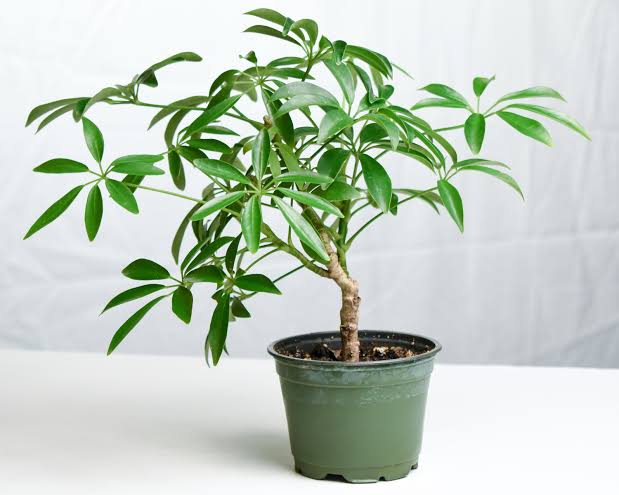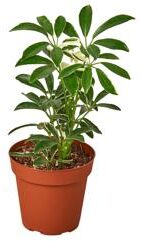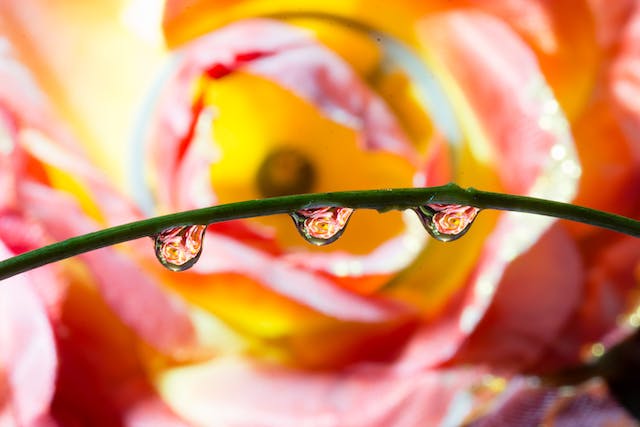Easy Tips for Growing a Happy Umbrella Plant at Home
Are you looking for a versatile, low-maintenance houseplant? Look no further than the Umbrella Plant (Schefflera)! This popular indoor plant has been gracing homes and offices, and for good reason. We’ll explore everything you need to know about the Umbrella Plant.

Introduction: Why the Umbrella Plant (Schefflera) Deserves a Spot in Your Home
The Umbrella Plant is known as Schefflera. It is a tropical plant that has captured the hearts of plant lovers worldwide. The distinctive leaf structure resembles an umbrella. This plant brings a unique visual appeal to any space. The Umbrella Plant’s charm goes beyond its looks – it’s also known for its:
- Air-purifying properties: Schefflera can help improve indoor air quality.
- Adaptability: It thrives in various light conditions. It’s suitable for different areas of your home.
- Low maintenance: Perfect for both beginner and experienced plant lovers.
- Longevity: With proper care, the Umbrella Plant can be a long-term companion in your home.
We’ll cover everything from their natural habitat to detailed care instructions. You’ll find valuable insights to help your Umbrella Plant thrive.
What is an Umbrella Plant (Schefflera)?
The Umbrella Plant belongs to the genus Schefflera. It is a tropical plant that is loved worldwide. Its popularity stems from its appearance and adaptability to indoor environments. Let’s explore what makes the Umbrella Plant (Schefflera) unique.
Scientific Name and Common Names
The Umbrella Plant goes by several names. Those names can lead to confusion. Here’s a quick breakdown:
- Scientific name: Schefflera
- Common names:
- Umbrella Plant
- Umbrella Tree
- Octopus Tree
- Parasol Plant
The term “Umbrella Plant” can refer to two main species:
- Schefflera arboricola: The Dwarf Umbrella Tree, is the most common found in homes.
- Schefflera actinophylla: The larger variety, often called the Queensland Umbrella Tree.
Origin and Natural Habitat
The Umbrella Plant (Schefflera) is native to tropical and subtropical regions, including:
- Taiwan
- Hainan
- Southern China
- Australia
- New Guinea
- Java
- Parts of Polynesia
The Schefflera can grow into a large tree. It can reach heights of up to 40 feet (12 meters). When it’s grown as a houseplant, it stays much smaller. It’s the perfect size for home environments.
Basic Characteristics and Appearance
The Umbrella Plant (Schefflera) is known for its distinctive foliage. The plant’s unique leaf structure gives it its name. Here are some key features:
- Leaves: The most striking feature of the Umbrella Plant is its leaves. They are:
- Compound leaves with 5-12 leaflets (sometimes more)
- Arranged in a circular pattern, resembling the spokes of an umbrella
- Glossy and dark green, though variegated varieties exist
- Long-stalked and can reach up to 4-6 inches in length
- Growth habit:
- Upright and bushy
- Train to grow as a tree or maintain as a compact shrub
- Stem:
- Sturdy and woody as the plant matures
- Green when young, turning brown with age
- Flowers:
- In its natural habitat, mature Scheffleras produce long, terminal panicles of small flowers
- Indoor plants rarely flower
- Size:
- As a houseplant, can grow up to 4-8 feet tall
- In outdoor tropical settings, can reach tree-like proportions
Its name contributes to its air-purifying abilities. The large leaves make it efficient at absorbing indoor air pollutants.
Types of Umbrella Plants
The term “Umbrella Plant” is often used. There are several species and varieties of the Schefflera genus. Each type has its unique characteristics. Let’s explore some of the popular types of Umbrella Plants.
1. Schefflera arboricola (Dwarf Umbrella Plant)
The Schefflera arboricola is known as the Dwarf Umbrella Plant. It is the most popular variety for indoor use.
2. Schefflera actinophylla (Queensland Umbrella Tree)
The Schefflera actinophylla is also known as the Queensland Umbrella Tree or Octopus Tree. It is a larger species.
3. Schefflera elegantissima (False Aralia)
The Schefflera elegantissima is not always included in the Schefflera family.

Choosing the Right Umbrella Plant for You
When selecting an Umbrella Plant (Schefflera) consider the following factors:
- Available space: Dwarf varieties are better for smaller spaces. The larger species need more room.
- Light conditions: Some varieties, especially variegated ones, may need more light than others.
- Care level: Umbrella Plants are low-maintenance. Some varieties may be more forgiving than others.
- Aesthetic preference: Consider leaf size, color, and growth habit.
Umbrella Plant Care Guide
Caring for your Umbrella Plant (Schefflera) is not complicated. The right knowledge can help your Schefflera thrive. Your plant can be a focal point in your home.
Light Requirements
Umbrella Plants (Schefflera) are adaptable when it comes to light. They do have their preferences:
- Ideal light: Bright, indirect light
- Can tolerate: Low to medium light conditions
- Avoid: Direct sunlight, which can scorch the leaves
Tips for optimal lighting:
- Place your Umbrella Plant near a north or east-facing window for balanced light.
- If using a south or west-facing window, filter the light with a sheer curtain.
- Rotate the plant quarterly to ensure even growth.
Note: Umbrella Plants need light to maintain their color patterns.
Watering Needs
Proper watering is crucial for the health of your Umbrella Plant (Schefflera). These plants prefer:
- Soil moisture: Moist but not waterlogged
- Watering frequency: Allow the top inch of soil to dry between waterings
Watering tips:
- Water until water drains from the bottom of the pot.
- Empty the drainage tray to prevent the plant from sitting in water.
- Reduce watering in winter when growth slows.
Soil and Potting
The right soil mix and proper potting are essential for a healthy Umbrella Plant:
Ideal soil characteristics:
- Well-draining
- Rich in organic matter
- Acidic to neutral pH (6.0-7.0)
Recommended soil mix:
- 2 parts peat moss or coco coir
- 1 part perlite or pumice
- 1 part compost or well-rotted manure

Temperature and Humidity
Umbrella Plants (Schefflera) are tropical plants that prefer warm conditions:
Temperature range:
- Ideal: 60-75°F (15-24°C)
- Minimum: 55°F (13°C)
- Avoid: Cold drafts and sudden temperature changes
Humidity requirements:
- Prefer: 40-50% relative humidity
- Can tolerate: Average indoor humidity levels
Fertilizing
Regular fertilization helps maintain the lush growth of Umbrella Plants:
Fertilizer type: Balanced, water-soluble fertilizer (e.g., 10-10-10 or 20-20-20)
Fertilizing schedule:
- Growing season (spring and summer): Every 2-4 weeks
- Fall and winter: Reduce to once every 6-8 weeks or stop completely
Application tips:
- Dilute the fertilizer to half the recommended strength.
- Apply to moist soil to prevent root burn.
- Flush the soil every few months to prevent salt buildup.
Pruning and Maintenance
Regular pruning helps maintain the shape and health of your Umbrella Plant (Schefflera):
Pruning objectives:
- Control size and shape
- Remove dead or yellowing leaves
- Encourage bushier growth
Pruning tips:
- Use clean, sharp pruning shears.
- Cut above a leaf node at a 45-degree angle.
- Prune in spring or early summer for best results.
General maintenance:
- Dust leaves with a damp cloth to keep them clean and photosynthesizing.
- Check for pests, especially under leaves and in-leaf axils.
- Rotate the plant quarterly to ensure even growth.
Common Umbrella Plant Problems and Solutions
Your Umbrella Plant (Schefflera) may face challenges. Recognizing these issues early and knowing how to address them will help. Here are some common problems and their solutions.
Pest Issues
Umbrella Plants can be susceptible to several pests. Here are the most common and how to deal with them:
- Spider Mites
- Signs: Fine webbing on leaves, tiny specks moving on the underside of leaves
- Solution:
- Increase humidity (spider mites prefer dry conditions)
- Wipe leaves with a damp cloth
- Use neem oil or insecticidal soap
- For severe infestations, consider using a miticide
- Mealybugs
- Signs: White, cottony masses on stems and leaf joints
- Solution:
- Remove visible bugs with a cotton swab dipped in rubbing alcohol
- Spray with neem oil or insecticidal soap
- For severe cases, use a systemic insecticide
- Scale
- Signs: Small, brown, shell-like bumps on stems and leaves
- Solution:
- Scrape off visible scales with a soft brush
- Apply horticultural oil or neem oil
- For severe infestations, use a systemic insecticide
Prevention Tip: Inspect your Umbrella Plant. Quarantine new plants before introducing them into your collection.
The key to Umbrella Plant (Schefflera) problems is early detection and prompt action. Observation of your plant will help you catch issues before they become severe.

Propagating Umbrella Plants
One of the joys of owning an Umbrella Plant (Schefflera) is the ability to propagate it. This process allows you to expand your collection. It provides an opportunity to share this beautiful plant with friends and family.
Propagating Umbrella Plants from Stem Cuttings
Stem cutting is the most common method for propagating your plants. Here’s how to do it:
Materials needed:
- Sharp, clean pruning shears or scissors
- Rooting hormone (optional but recommended)
- Small pots
- Well-draining potting mix
- Clear plastic bags
Step-by-step guide:
- Select a healthy stem: Choose a stem that is 4-6 inches long with at least 2-3 leaf nodes. The best time to take cuttings is in spring or early summer.
- Make the cut:
- Cut the stem at a 45-degree angle below a leaf node.
- Remove the lower leaves, leaving only 2-3 leaves at the top.
- Apply rooting hormone (optional):
- Dip the cut end in rooting hormone powder or gel.
- This can increase the success rate and speed of rooting.
- Prepare the potting mix:
- Fill small pots with a well-draining potting mix.
- A mixture of peat moss and perlite works well.
- Plant the cutting:
- Make a hole in the potting mix with a pencil or stick.
- Insert the cutting into the hole, ensuring the remaining leaves are above the soil.
- Firm the soil around the cutting.
- Create a humid environment:
- Place a clear plastic bag over the pot to create a mini greenhouse effect.
- This helps maintain high humidity, which promotes rooting.
- Provide proper care:
- Place the pot in bright, indirect light.
- Keep the soil moist but not waterlogged.
- Remove the plastic bag for a few hours daily to prevent mold growth.
- Check for root development:
- Roots develop in 3-4 weeks.
- You can tug on the cutting; if you feel resistance, roots have likely formed.
- Transplant:
- Transplant the new Umbrella Plant to a larger pot with regular potting soil.
Decorating with Umbrella Plants
Umbrella Plants (Schefflera) are easy to care for. They’re versatile and attractive additions to any interior design scheme. Their lush, tropical foliage can add a touch of exotic elegance to various spaces in your home or office
Best Locations for Umbrella Plants in the Home
Umbrella Plants can thrive in various locations. They are adaptable to different room layouts and lighting conditions. Here are some spots to consider:
- Living Room:
- Near a bright window with filtered light
- As a statement piece in a corner
- On a side table next to a couch
- Home Office:
- On a desk to add a touch of nature to your workspace
- In a larger pot next to your desk for a more dramatic effect
- Bedroom:
- On a dresser or nightstand to bring a calming, natural element
- In a reading nook to create a tranquil atmosphere
- Bathroom (if well-lit):
- On a vanity or shelf to add tropical flair
- In a corner to take advantage of humid conditions
- Kitchen:
- On a countertop near a window
- As part of an indoor herb garden setup
- Entryway:
- As a welcoming element in a bright foyer
- On a console table to create an inviting first impression
Design Tip: Consider the size of your Umbrella Plant when choosing its location. Dwarf varieties (Schefflera arboricola) are perfect for smaller space. Larger species can make stunning floor plants in spacious areas.
Using Umbrella Plants in Different Interior Design Styles
Creative Display Ideas for Umbrella Plants
- Vertical Garden:
- Create a living wall using small Umbrella Plants
- Use wall-mounted planters or a DIY frame system
- Terrarium:
- Use dwarf varieties in a large, enclosed glass container
- Add small decorative elements like pebbles or miniature figurines
- Room Divider:
- Use larger Umbrella Plants in tall planters to divide open spaces
- Hanging Planters:
- Suspend smaller Umbrella Plants in macramé or geometric hanging planters
- Tiered Display:
- Arrange Umbrella Plants of varying sizes on a multi-level plant stand

Conclusion: Embracing the Beauty of Umbrella Plants
Let’s recap the key points. These tropical beauties are a fantastic addition to any indoor garden:
Key Umbrella Plant Care Points
- Light: Umbrella Plants thrive in bright, indirect light. They can adapt to lower light conditions.
- Water: Allow the top inch of soil to dry between waterings. Adjust the frequency based on season and environment.
- Soil: Use a well-draining, rich potting mix to prevent water-logging and root rot.
- Temperature: Keep your Schefflera in a warm environment, between 60-75°F (15-24°C).
- Humidity: While adaptable to average indoor humidity. The plants appreciate extra moisture through misting or pebble trays.
- Fertilizer: Feed with a balanced, water-soluble fertilizer. Feed every 2-4 weeks during the growing season.
- Pruning: Regular pruning helps maintain shape and encourages bushier growth.
- Propagation: Propagate through stem cuttings or air layering to expand your collection.
- Pest Management: Stay vigilant for common pests like spider mites and mealybugs. Address any issue you spot.
- Decorative Versatility: Use Umbrella Plants in various interior design styles. Try everything from tropical to minimalist.
